Home>Home Maintenance>What To Use For Drainage In A Raised Bed Garden
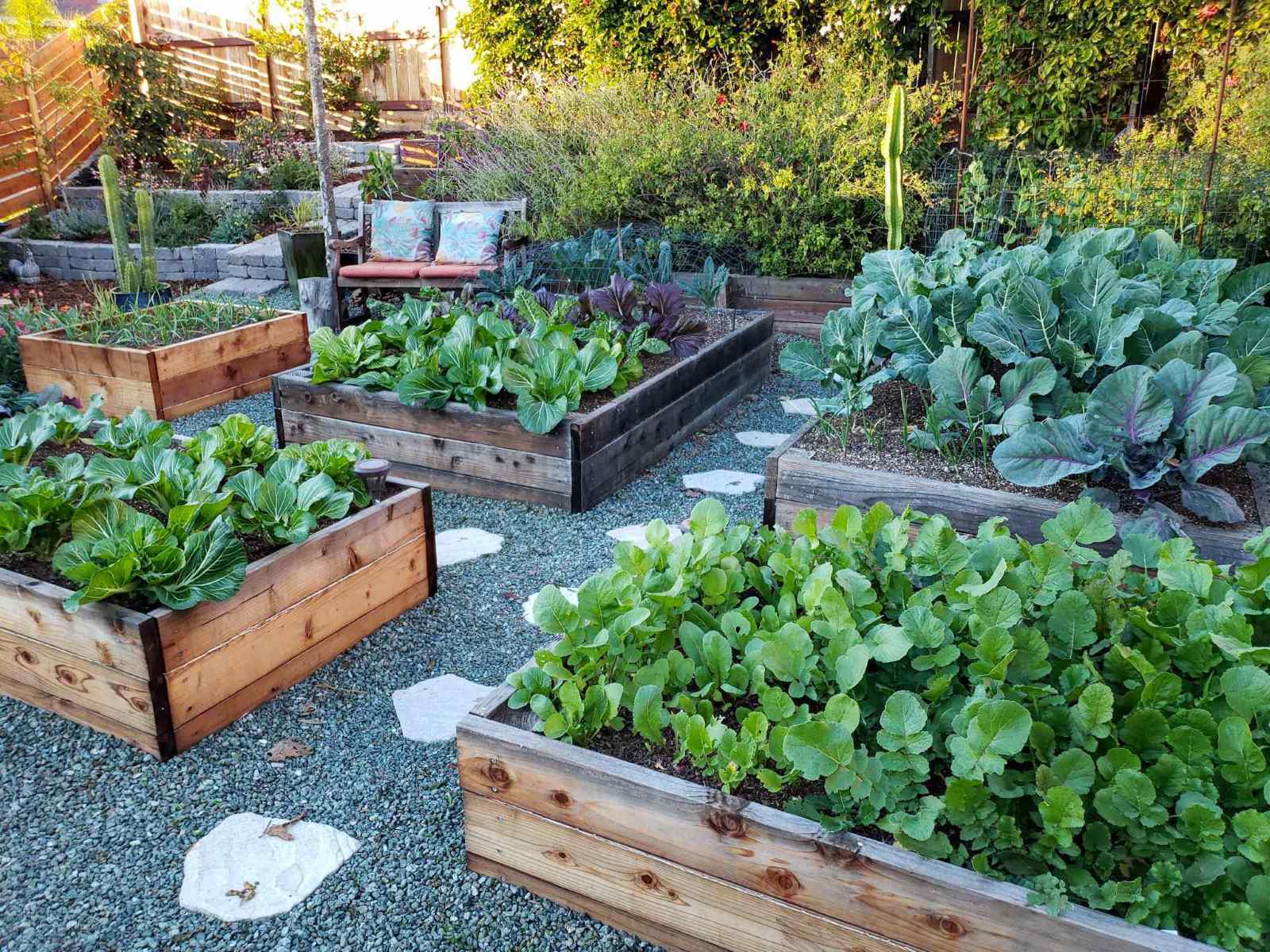

Home Maintenance
What To Use For Drainage In A Raised Bed Garden
Modified: March 7, 2024
Discover the best materials to use for drainage in your raised bed garden. Get expert tips and guidance for home maintenance.
(Many of the links in this article redirect to a specific reviewed product. Your purchase of these products through affiliate links helps to generate commission for Storables.com, at no extra cost. Learn more)
Introduction
When it comes to maintaining a healthy and thriving raised bed garden, proper drainage is crucial. Adequate drainage ensures that excess water does not accumulate in the soil, leading to root rot, nutrient leaching, and ultimately, the decline of your plants. Choosing the right materials for drainage in your raised bed garden is of utmost importance.
In this article, we will explore the importance of drainage in a raised bed garden and discuss various factors to consider when selecting materials for drainage. We will also delve into different types of materials that can be used for effective drainage, providing you with the knowledge to make the best decision for your garden’s needs.
Whether you are a seasoned gardener or just starting out, understanding how to optimize drainage in your raised bed garden will contribute to the overall success of your plants and landscape.
Key Takeaways:
- Proper drainage in a raised bed garden is crucial to prevent waterlogging, root suffocation, and nutrient leaching. Selecting the right materials based on soil type, climate, and plant needs is essential for optimal plant health.
- Materials such as gravel, sand, pea gravel, perlite, vermiculite, pine bark, coconut coir, and compost all offer unique benefits for improving drainage in raised bed gardens. Consider factors like soil composition, climate, and plant selection when choosing the best materials for your garden’s needs.
Importance of Drainage in a Raised Bed Garden
Having proper drainage in your raised bed garden is essential for several reasons. Let’s take a closer look at why drainage is important and how it affects the overall health of your plants.
1. Prevents waterlogged soil: Good drainage prevents water from pooling in the soil, which can lead to root suffocation and disease. When water sits around plant roots for extended periods, it deprives them of oxygen, causing them to rot and die. By ensuring proper drainage, you create an environment where excess water flows through the soil, allowing roots to breathe and absorb nutrients efficiently.
2. Controls moisture levels: The right drainage system helps maintain optimal moisture levels in the soil. Too much moisture can encourage the growth of harmful fungi, bacteria, and mold, while insufficient moisture can lead to drought stress and hinder plant growth. Properly drained soil allows excess water to drain away while retaining enough moisture for plants to thrive.
3. Prevents nutrient leaching: When water drains too quickly through the soil, it can wash away essential nutrients, depriving plants of the elements they need to grow and thrive. Conversely, poor drainage can cause water to become stagnant, leading to nutrient imbalances and toxicity. Having a well-drained raised bed garden ensures that nutrients are retained in the soil, providing a balanced environment for healthy plant growth.
4. Minimizes soil erosion: Adequate drainage reduces the risk of soil erosion. When water accumulates and flows rapidly over the soil surface, it can wash away valuable topsoil, which contains essential nutrients and organic matter. By promoting proper drainage, you can help preserve the integrity of your soil and prevent erosion, maintaining a fertile and productive garden.
5. Enhances root development: Good drainage allows plant roots to spread and penetrate the soil easily. Roots require both air and water to function optimally, and well-drained soil facilitates the exchange of gases and nutrients between the roots and the surrounding environment. This promotes healthy root development, leading to stronger, more robust plants.
By understanding and addressing the importance of drainage in your raised bed garden, you can create an ideal growing environment for your plants. With proper drainage, you can avoid common problems such as root rot, nutrient deficiency, and poor plant growth, ultimately ensuring the success and longevity of your garden.
Factors to Consider for Drainage in a Raised Bed Garden
When it comes to selecting the right drainage materials for your raised bed garden, there are several factors to consider. These factors will help you determine the best options for ensuring good drainage and optimal plant health.
1. Soil Composition: Understanding the composition of your soil is crucial in choosing proper drainage materials. Different types of soil have varying water retention abilities. For example, clay soil retains water for longer periods, requiring materials that promote faster drainage. Sandy soil, on the other hand, drains quickly and may benefit from materials that improve water retention.
2. Climate: The climate in your region plays a significant role in drainage considerations. If you live in an area with heavy rainfall, materials that allow excess water to flow through quickly are ideal. In drier climates, materials that retain moisture may be more beneficial. Consider the average rainfall and weather patterns in your area when selecting drainage materials.
3. Plant Selection: The types of plants you intend to grow in your raised bed garden should also influence your choice of drainage materials. Some plants prefer well-drained soil, while others thrive in soil with higher moisture content. Take into account the specific needs and preferences of the plants you plan to cultivate to ensure their optimal growth.
4. Container Types: If your raised bed garden consists of containers or pots instead of directly planting in the ground, consider the type of containers you are using. Some containers have built-in drainage holes, while others may require additional materials to facilitate drainage. Factor in the container’s design and construction when choosing appropriate drainage materials.
5. Budget and Availability: The cost and availability of drainage materials should also be taken into account. Some materials, such as gravel or crushed stone, may be readily available and budget-friendly, while others, like coconut coir or perlite, may require more effort and expense to acquire. Evaluate your budget and accessibility of materials to make the most practical choice for your raised bed garden.
By considering these factors and tailoring your drainage materials accordingly, you can create an optimal environment for your raised bed garden. Customizing the materials to suit your soil composition, climate, plant selection, container types, and budget ensures effective drainage and the long-term success of your garden.
Types of Materials for Drainage in Raised Bed Gardens
There are various materials available that can be used to improve drainage in raised bed gardens. Each material serves a unique purpose in facilitating water flow and preventing waterlogging. Let’s explore some of the most commonly used materials for drainage:
-
Gravel or Crushed Stone
Gravel or crushed stone is a popular choice for promoting drainage in raised bed gardens. These materials create open spaces between the particles, allowing water to pass through easily. They also provide stability and support to the soil while preventing compaction. Simply layer a few inches of gravel or crushed stone at the bottom of your raised bed before adding the soil.
-
Read more: What Is A Raised Garden Bed
Sand
Sand is another commonly used material for drainage in raised bed gardens. It is particularly effective in improving drainage in heavy clay soils. The coarse texture of sand allows water to drain more freely, preventing waterlogging. Mix sand into the top layer of soil or create a layer of sand underneath the soil to enhance drainage.
-
Pea Gravel
Pea gravel consists of small, smooth stones that are excellent for drainage in raised bed gardens. It promotes water movement through the soil without compacting or impeding root growth. Pea gravel is aesthetically pleasing, and its size ensures it doesn’t block water flow. Add a layer of pea gravel to the bottom of your raised bed for effective drainage.
-
Perlite
Perlite is a lightweight volcanic mineral that is commonly used as a soil amendment to improve drainage. It has excellent water-holding capacity and aids in proper aeration of the soil. Incorporate perlite into the soil mix of your raised bed to enhance drainage capabilities. It’s especially beneficial for plants that prefer well-drained soil.
-
Vermiculite
Vermiculite is another mineral material commonly used for improving drainage in raised bed gardens. It retains moisture while allowing excess water to drain freely. Vermiculite also aids in providing aeration and preventing soil compaction. Mix vermiculite into your soil to improve its drainage abilities and create a hospitable environment for your plants.
-
Read more: What To Line A Raised Garden Bed With
Pine Bark
Pine bark is an organic material that enhances drainage while adding organic matter to the soil. It helps in loosening compacted soil and prevents water from pooling. Mix pine bark into the soil mix of your raised bed to improve drainage and provide a nutrient-rich environment for your plants.
-
Coconut Coir
Coconut coir, also known as coco coir, is a sustainable and environmentally friendly material used for drainage in raised bed gardens. It has excellent water absorption and drainage qualities, promoting air circulation and preventing oversaturation of the soil. Mix coconut coir with your soil to improve drainage and moisture retention.
-
Compost
Compost is a fantastic material that not only improves soil fertility but also aids in drainage. It adds organic matter to the soil, creating a well-structured soil with good drainage capabilities. Mix compost with your soil mix to enhance drainage while providing essential nutrients for your plants.
These materials offer different benefits and can be used alone or in combination, depending on your specific drainage needs. Consider your soil type, climate, and plant requirements to determine the best drainage materials for your raised bed garden.
Gravel or Crushed Stone
Gravel or crushed stone is a commonly used material for promoting drainage in raised bed gardens. These materials provide several benefits that contribute to effective water flow and prevention of waterlogging.
One of the main advantages of using gravel or crushed stone is that they create open spaces between the particles. These spaces allow excess water to pass through easily, preventing it from accumulating and causing waterlogging in the soil. The coarse texture of the gravel or crushed stone facilitates the rapid movement of water, ensuring that it drains away efficiently.
In addition to improving drainage, gravel or crushed stone also provides stability and support to the soil in raised bed gardens. By adding a few inches of gravel or crushed stone at the bottom of the raised bed, you create a solid foundation that helps prevent soil compaction. This allows plant roots to penetrate the soil more easily, promoting healthy root development and overall plant growth.
Another benefit of using gravel or crushed stone is their long-lasting nature. They do not break down easily, ensuring that the drainage system remains intact over time. This makes them an ideal choice for long-term drainage improvements in raised bed gardens.
When using gravel or crushed stone for drainage, it’s important to choose the appropriate size. Opt for stones that are around ¾ inch to 1 inch in diameter. Larger stones may hinder water flow, while smaller ones may compact and impede drainage.
To incorporate gravel or crushed stone into your raised bed garden, start by clearing the area and leveling the soil. Then, create a layer of gravel or crushed stone at the bottom of the raised bed, ensuring a uniform thickness across the bed. This layer should be at least 2 to 3 inches deep, but can be adjusted based on your specific drainage requirements.
Once the layer of gravel or crushed stone is in place, proceed with adding the soil mix on top. It’s important to use a well-draining soil mix that suits your plant’s needs. The gravel or crushed stone acts as a barrier, preventing the soil from compacting and promoting effective drainage.
In summary, using gravel or crushed stone as a drainage material in raised bed gardens is an excellent choice due to their ability to create open spaces, provide stability, and promote long-term drainage. By incorporating these materials into your raised bed, you can ensure that excess water drains away efficiently, preventing waterlogging and promoting healthy plant growth.
Read more: What To Plant In Raised Garden Beds
Sand
Sand is a widely used material for improving drainage in raised bed gardens, especially in heavy clay soils that tend to retain excess moisture. Adding sand to your raised bed garden can help create a well-drained environment for your plants to thrive.
The main benefit of using sand for drainage is its ability to improve water movement through the soil. Sand has coarse particles that allow water to pass through more easily, preventing waterlogging and ensuring that excess water drains away effectively. By incorporating sand into your raised bed, you can help create a balance between moisture retention and drainage.
Sand is particularly beneficial in heavy clay soils, which are known for their poor drainage characteristics. Clay soil particles are very fine and tend to pack tightly together, preventing water from moving through. The addition of sand helps to loosen the soil structure, allowing water to flow more freely and preventing water from pooling around plant roots.
When using sand for drainage, it’s important to choose the right type of sand. Avoid using fine sand, as it can lead to compaction and inhibit drainage. Coarse sand works best for improving drainage, as it provides better aeration and allows water to flow more smoothly. You can find coarse sand at gardening stores or landscaping suppliers.
To incorporate sand into your raised bed garden, start by removing any existing vegetation or debris from the area. Level the soil and then mix the sand into the top layer of the soil. Aim for a ratio of roughly 1 part sand to 3 parts soil, but you can adjust the ratio based on the drainage needs of your specific plants and soil type.
It’s important to note that sand alone is not a complete replacement for organic matter or other soil amendments. If your soil lacks organic matter or essential nutrients, it’s recommended to add compost or other organic materials in addition to sand. This will help improve overall soil fertility and ensure optimal conditions for your plants.
While sand is an effective drainage material, it should be used with caution in certain situations. For example, if you have sandy soil that already drains too quickly, the addition of more sand may exacerbate the problem and lead to difficulty in retaining moisture. In such cases, it’s best to consult with a local gardening expert to determine the most suitable materials for improving drainage in your specific soil type.
In summary, adding sand to your raised bed garden can be a beneficial way to improve drainage, especially in heavy clay soils. The coarse texture of sand allows for better water movement and helps prevent waterlogging. By incorporating sand into your raised bed, you can create an environment that promotes healthier root development and overall plant growth.
Pea Gravel
Pea gravel is a popular material used for promoting drainage in raised bed gardens. Its small, smooth stones offer several benefits that contribute to effective water flow and prevent waterlogging.
One of the main advantages of using pea gravel is its ability to create optimal drainage channels. The small size of the stones ensures that they do not block or impede water movement, allowing excess water to flow through the soil and drain away efficiently. This prevents water from accumulating and causing waterlogging, which can be detrimental to plant health.
In addition to its drainage capabilities, pea gravel also provides stability and support to the soil in raised bed gardens. The stones interlock with each other, creating a solid base that helps prevent soil compaction. This allows for better aeration and root penetration, promoting healthy root development and overall plant growth.
Pea gravel is an aesthetically pleasing addition to raised bed gardens. The small, round stones create an attractive texture and can enhance the overall visual appeal of your garden space. Its natural look blends well with various plantings and adds a decorative element to your raised beds.
When using pea gravel for drainage, it’s recommended to create a layer at the bottom of your raised bed. Aim for a layer thickness of around 2 to 4 inches, but the exact depth may vary depending on the size of your raised bed and drainage requirements. This layer of pea gravel acts as a reservoir for excess water, allowing it to drain away from the root zone of your plants.
To incorporate pea gravel into your raised bed, start by preparing the area and leveling the soil. Then, spread a layer of pea gravel evenly across the bottom of the bed, ensuring complete coverage. Be mindful of any drainage holes or outlets in your raised bed design to ensure water can easily flow out of the bed.
It’s important to note that pea gravel should not be used as a standalone material for filling your entire raised bed. This can hinder root growth and nutrient uptake. Instead, combine it with a well-draining soil mix to create a balanced growing medium that provides both proper drainage and essential nutrients for your plants.
In summary, pea gravel is an excellent choice for improving drainage in raised bed gardens. Its small, smooth stones create optimal drainage channels, enhance soil stability, and add an attractive aesthetic element to your garden space. By incorporating pea gravel into your raised bed, you can prevent waterlogging, promote healthy root development, and create an environment where your plants can thrive.
Perlite
Perlite is a lightweight volcanic mineral that is widely used as a drainage material in raised bed gardens. Its unique properties make it an excellent choice for improving soil drainage and promoting healthy plant growth.
One of the main advantages of using perlite is its ability to improve aeration and drainage in the soil. Perlite consists of small, white, lightweight particles that create air pockets in the soil. These air pockets allow for better water drainage and help prevent waterlogging, ensuring that excess water does not accumulate around the roots of your plants.
Perlite has excellent water-holding capacity, meaning it can absorb and retain moisture while still maintaining proper drainage. This characteristic is beneficial in raised bed gardens, as it helps create a well-balanced environment for plant roots. The presence of perlite in the soil mix allows for sufficient moisture retention without the risk of oversaturation.
In addition to its drainage properties, perlite also contributes to improved soil structure. It helps to loosen compacted soil and prevent soil compaction, giving plant roots room to grow and allowing for better root development. The addition of perlite to your raised bed garden can enhance the tilth and friability of your soil, making it easier for roots to penetrate and access nutrients.
Perlite is a versatile material that can be mixed into your soil or used as a top dressing. When incorporating perlite into your raised bed garden, you can add it to your soil mix before filling the bed. Aim for a ratio of approximately 1:4 (perlite to soil) to ensure proper drainage and aeration. Alternatively, you can sprinkle a layer of perlite on top of the soil to help prevent compaction and improve moisture retention.
It’s important to note that perlite is an inorganic material and does not provide nutrients to plants. Therefore, it’s essential to supplement with organic matter or other soil amendments to ensure your raised bed garden has the necessary nutrients for healthy plant growth.
When using perlite, be cautious not to inhale the fine particles, as they can be irritating to the respiratory system. It’s recommended to wear a dust mask and work in a well-ventilated area when handling perlite.
In summary, perlite is an excellent material for improving drainage in raised bed gardens. Its lightweight and porous nature promotes aeration, prevents waterlogging, and improves soil structure. By incorporating perlite into your raised bed garden, you can create a healthy growing environment for your plants, promoting robust root development and overall plant health.
Vermiculite
Vermiculite is a natural mineral material commonly used for improving drainage in raised bed gardens. It offers several benefits that contribute to effective water flow, moisture retention, and overall plant health.
One of the main advantages of using vermiculite is its ability to absorb and retain moisture. Vermiculite has a high water-holding capacity, meaning it can soak up and hold onto water, gradually releasing it to the surrounding soil as needed. This feature makes vermiculite a valuable material for maintaining consistent soil moisture levels in raised bed gardens.
In addition to its moisture retention properties, vermiculite also improves soil drainage. The mineral particles of vermiculite are layered and porous, allowing excess water to drain away while still retaining enough moisture for the plants. This balance is crucial in creating an ideal growing environment for your plants, preventing waterlogging and root rot.
Vermiculite has excellent aeration properties, which are essential for healthy root development. The mineral’s porous structure allows for better airflow in the soil, promoting oxygen exchange and preventing soil compaction. This encourages root growth and nutrient uptake, leading to stronger and more robust plants in your raised bed garden.
Using vermiculite in your raised bed garden is relatively simple. You can mix vermiculite into your soil or use it as a top dressing. When incorporating vermiculite into your soil mix, aim for a ratio of roughly 1 part vermiculite to 3 parts soil. This provides a balance of drainage, moisture retention, and aeration. If using it as a top dressing, sprinkle a thin layer of vermiculite on the surface of the soil, gently working it into the top layer.
It’s essential to note that vermiculite is an inorganic material and does not provide significant levels of nutrients to plants. Therefore, it’s important to supplement with organic matter or other soil amendments to ensure your raised bed garden has the necessary nutrients for optimal plant growth.
Another advantage of vermiculite is its ability to improve soil structure. It helps to break up heavy clay soils and improve the friability of sandy soils. Vermiculite acts as a soil conditioner, creating a well-balanced growing medium that enhances root penetration, nutrient availability, and overall soil health.
When using vermiculite in your raised bed garden, it’s crucial to choose a high-quality product from reputable sources. Look for vermiculite that is free of contaminants and has been properly processed for optimal performance.
In summary, vermiculite is a versatile mineral material that improves drainage, moisture retention, and soil structure in raised bed gardens. By incorporating vermiculite into your gardening routine, you can create a well-balanced growing environment that promotes healthy root development, adequate moisture levels, and overall plant vitality.
Read more: What Size Should A Raised Garden Bed Be
Pine Bark
Pine bark is a popular organic material used for improving drainage in raised bed gardens. It offers several benefits that contribute to effective water flow, soil aeration, and overall plant health.
One of the main advantages of using pine bark for drainage is its ability to create air pockets in the soil. The texture and composition of pine bark allow for better airflow and soil aeration. This promotes the exchange of gases between the roots and the soil, preventing root suffocation and promoting healthy root development.
Pine bark also has excellent water drainage capabilities. The coarse texture and natural structure of the bark allow excess water to flow through easily, preventing waterlogging in the raised bed. By creating channels for drainage, pine bark helps maintain the ideal moisture balance for your plants.
In addition to its drainage properties, pine bark adds organic matter to the soil. As it breaks down over time, pine bark releases essential nutrients into the soil, contributing to overall soil fertility. This organic matter also improves soil structure by loosening compacted soil and promoting better root penetration.
Using pine bark in your raised bed garden is relatively straightforward. It can be mixed into the soil or used as a top dressing. When incorporating pine bark into your soil mix, aim for a ratio of roughly 1 part bark to 3 parts soil. This provides a well-balanced growing medium that offers good drainage and nutrient retention. If using it as a top dressing, apply a thin layer of pine bark on the surface of the soil, gently working it into the top layer.
Pine bark can be found in different sizes, ranging from small chips to larger nuggets. The choice of size depends on your preference and the specific needs of your raised bed garden. Smaller bark chips integrate more easily into the soil, while larger nuggets provide longer-lasting amendments on the surface.
It’s important to note that pine bark takes some time to break down and release its nutrients into the soil. Therefore, it’s helpful to incorporate other organic matter, such as compost, to provide immediate nutrient availability for your plants.
When using pine bark, choose a high-quality product that is free from any chemicals or contaminants. Look for pine bark specifically intended for horticultural use, as it will be processed and screened to ensure consistency and suitability for gardening purposes.
In summary, pine bark is a beneficial organic material for improving drainage in raised bed gardens. Its ability to enhance soil aeration, facilitate water flow, and contribute to soil fertility makes it an excellent choice for promoting healthy plant growth. By incorporating pine bark into your raised bed, you can create a well-balanced environment that allows your plants to thrive.
Coconut Coir
Coconut coir, also known as coco coir, is a sustainable and environmentally friendly material used for improving drainage in raised bed gardens. It offers several benefits that contribute to effective water flow, moisture retention, and overall plant health.
One of the main advantages of using coconut coir for drainage is its excellent water absorption and retention properties. Coconut coir can hold up to 10 times its weight in water, making it an ideal material for maintaining optimal moisture levels in the soil. It allows for gradual water release to the plant roots, providing a consistent supply of moisture without the risk of waterlogging.
Coconut coir also improves drainage by preventing soil compaction. Its fibrous structure promotes soil aeration and helps create air channels within the soil. This allows excess water to drain away while ensuring sufficient oxygen supply to the roots. By improving soil structure and preventing compaction, coconut coir promotes healthier root development and overall plant growth.
Coconut coir is pH-neutral, meaning it has a near-neutral pH level that is suitable for a wide range of plants. This makes it a versatile material for various types of raised bed gardens. Unlike some other materials, coconut coir doesn’t alter the pH of the soil, providing a stable and consistent environment for your plants.
Using coconut coir in your raised bed garden is simple. It can be used as a standalone medium or mixed with other soil components, such as compost or perlite, to create a well-balanced soil mix. Start by rehydrating the coconut coir blocks or bricks in water, following the manufacturer’s instructions. Once the coir has expanded and is moist, it can be added directly to your raised bed or mixed into the soil.
Coconut coir is also an eco-friendly choice as it is derived from the outer husk of coconuts, a renewable resource. It is a byproduct of coconut processing, making it a sustainable alternative to peat moss, which is harvested from delicate ecosystems. By using coconut coir, you are helping to reduce the demand for peat moss and contributing to environmental conservation.
It’s important to note that coconut coir contains negligible amounts of nutrients. Therefore, it’s important to supplement with organic matter or other fertilizers to ensure your plants receive the necessary nutrients for optimal growth.
In summary, coconut coir is a versatile and sustainable material for improving drainage in raised bed gardens. Its excellent water absorption, moisture retention, and soil aeration properties make it an ideal choice. By incorporating coconut coir into your raised bed garden, you can create a well-drained and moisture-balanced environment that promotes healthy root development and overall plant success.
Consider using a layer of gravel or coarse sand at the bottom of your raised bed to improve drainage. This will help prevent waterlogging and promote healthy root growth for your plants.
Compost
Compost is a valuable organic material that not only improves soil fertility but also aids in drainage in raised bed gardens. It offers several benefits that contribute to effective water flow, nutrient availability, and overall plant health.
One of the main advantages of using compost for drainage is its ability to improve soil structure. Compost contains organic matter that helps break up compacted soil, allowing for better water penetration and drainage. By loosening the soil, compost creates pathways for excess water to flow through, preventing waterlogging and promoting healthier root development.
Compost acts as a moisture regulator, helping to maintain balanced soil moisture levels. It has the ability to retain moisture while still promoting drainage. This ensures that the soil remains consistently moist without becoming oversaturated. The moisture retention properties of compost create an ideal environment for plants to access water as needed.
In addition to improving soil structure and moisture retention, compost also enhances nutrient availability. It contains a wide array of macro and micronutrients that provide essential elements for plant growth. As compost breaks down, these nutrients are gradually released into the soil, enriching it and providing a continuous supply of nutrients to your plants.
The organic matter in compost contributes to the overall health of the soil by increasing its ability to hold water. This is especially beneficial in sandy soils that drain quickly and struggle with water retention. The increased water-holding capacity of the soil allows plants to access moisture for longer periods, reducing the frequency of watering and ensuring consistent plant hydration.
Using compost in your raised bed garden is relatively simple. Add a layer of compost to the top of your raised bed and gently work it into the existing soil. Aim for a layer thickness of about 2 to 3 inches, but adjust accordingly based on your specific needs and the quality of the compost. Alternatively, you can mix compost into the soil during bed preparation to ensure it is evenly distributed.
It’s important to note that the quality of the compost plays a significant role in its drainage-enhancing properties. Good-quality compost should be well decomposed, free of contaminants, and sourced from organic materials. Avoid using compost that is overly wet or contains large pieces of unfinished organic matter, as they may hinder drainage instead of improving it.
In summary, compost is a versatile and nutrient-rich material for improving drainage in raised bed gardens. Its ability to improve soil structure, regulate moisture levels, and enhance nutrient availability makes it an excellent choice. By incorporating compost into your raised bed garden, you can create a healthy and well-drained soil environment that supports the growth and productivity of your plants.
Choosing the Right Drainage Material for Your Raised Bed Garden
When it comes to selecting the best drainage material for your raised bed garden, several factors should be taken into consideration. By choosing the right materials, you can ensure proper water flow, prevent waterlogging, and create an environment conducive to healthy plant growth. Here are some key points to consider:
1. Soil Composition: Consider the composition of your soil. Different soil types exhibit different drainage characteristics. If your soil is heavy clay and tends to retain water, materials like gravel, sand, or perlite can help improve drainage. If your soil is sandy and drains too quickly, incorporating organic matter like coconut coir or compost can help retain moisture.
2. Climate and Rainfall: Take into account the climate and average rainfall in your area. If you live in a region with heavy rainfall, materials such as gravel, sand, or pea gravel can promote efficient water drainage. In drier climates, materials that retain moisture like coconut coir or compost can help maintain adequate soil moisture levels.
3. Plant Selection: Consider the specific needs of the plants you intend to grow in your raised bed garden. Some plants, like succulents or herbs, prefer well-drained soil, while others, like certain vegetables or perennials, may tolerate or even require slightly moisture-retentive soil. Choose materials that align with the drainage preferences of your chosen plants.
4. Container Types: If your raised bed garden consists of containers or pots, consider the type of containers you are using. Some containers have built-in drainage holes, while others may require additional materials to facilitate drainage. Ensure that your chosen drainage materials are compatible with the containers you are using.
5. Budget and Availability: Consider the cost and accessibility of the drainage materials. Gravel, sand, and perlite are often readily available and budget-friendly options. However, materials like coconut coir or vermiculite may require more effort and expense to acquire. Evaluate your budget and accessibility to make an informed decision.
6. Combination Approach: It’s worth noting that using a combination of drainage materials can often provide the best results. For example, you can create a layered drainage system using gravel at the bottom, followed by a mix of sand and compost in the middle, and a top layer of coconut coir or perlite. Experimenting with different combinations can help you achieve the optimal drainage for your specific garden.
When choosing your drainage materials, always ensure they are of high quality, free from contaminants, and suitable for gardening purposes. Proper installation is essential, so be sure to follow instructions and guidelines on incorporating the materials into your raised bed garden.
In summary, choosing the right drainage material for your raised bed garden is crucial for maintaining proper water flow and preventing waterlogging. Consider factors such as soil composition, climate, plant selection, container types, budget, and availability. By evaluating these factors and selecting appropriate drainage materials, you can create a healthy and well-drained environment that promotes the success of your plants in your raised bed garden.
Conclusion
In conclusion, proper drainage is a vital element for maintaining a healthy and thriving raised bed garden. The choice of the right drainage materials plays a crucial role in ensuring effective water flow, preventing waterlogging, and creating an optimal environment for plant growth.
Factors such as soil composition, climate, plant selection, container types, budget, and availability should all be considered when selecting drainage materials for your raised bed garden. Understanding the unique needs of your garden and plants will guide you in making informed decisions.
Materials such as gravel or crushed stone, sand, pea gravel, perlite, vermiculite, pine bark, coconut coir, and compost all have their specific benefits and purposes. Gravel or crushed stone provides stability and open spaces for water to flow, while sand improves drainage in heavy clay soils. Pea gravel offers excellent drainage while adding an attractive aesthetic element. Perlite enhances aeration and drainage, and vermiculite promotes water retention and drainage balance.
Pine bark aids in soil aeration and water drainage, coconut coir contributes to moisture retention and air circulation, and compost improves soil structure, nutrient availability, and moisture regulation. Each material serves a unique function and can be used alone or in combination to address specific drainage needs.
It is essential to select high-quality drainage materials, follow proper installation techniques, and consider the specific requirements of your raised bed garden. By doing so, you can create a well-drained environment that promotes healthy root development, prevents water-related issues, and fosters optimal plant growth and productivity.
Remember, gardening is a continuous learning process, and it is essential to monitor your raised bed garden’s drainage and make adjustments when necessary. By paying attention to the drainage needs of your plants and adapting your materials accordingly, you can create an environment that supports the long-term success of your raised bed garden.
With the right drainage materials and a thoughtful approach, you can enjoy the beauty and abundance of a thriving raised bed garden for years to come.
Frequently Asked Questions about What To Use For Drainage In A Raised Bed Garden
Was this page helpful?
At Storables.com, we guarantee accurate and reliable information. Our content, validated by Expert Board Contributors, is crafted following stringent Editorial Policies. We're committed to providing you with well-researched, expert-backed insights for all your informational needs.
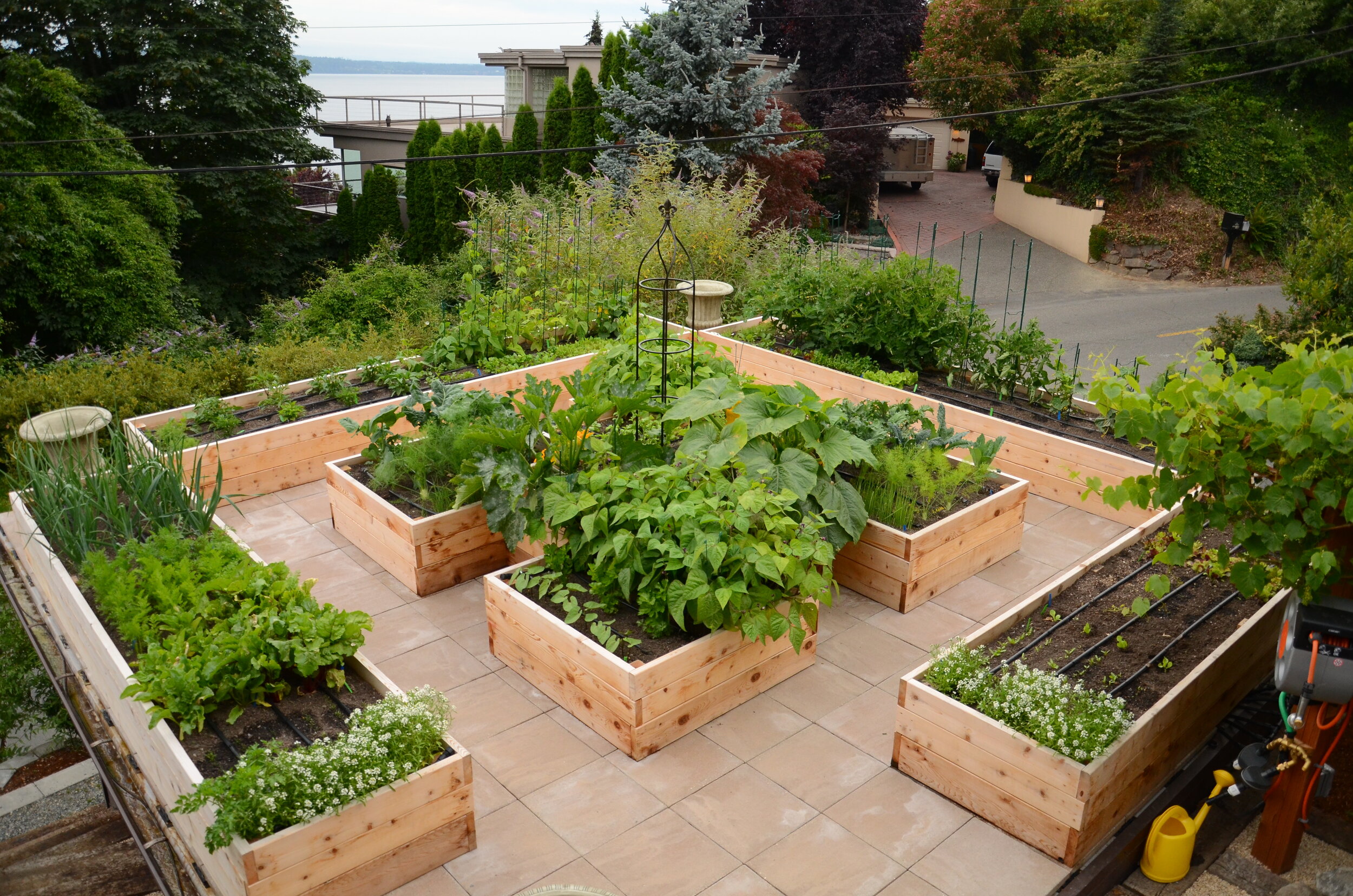

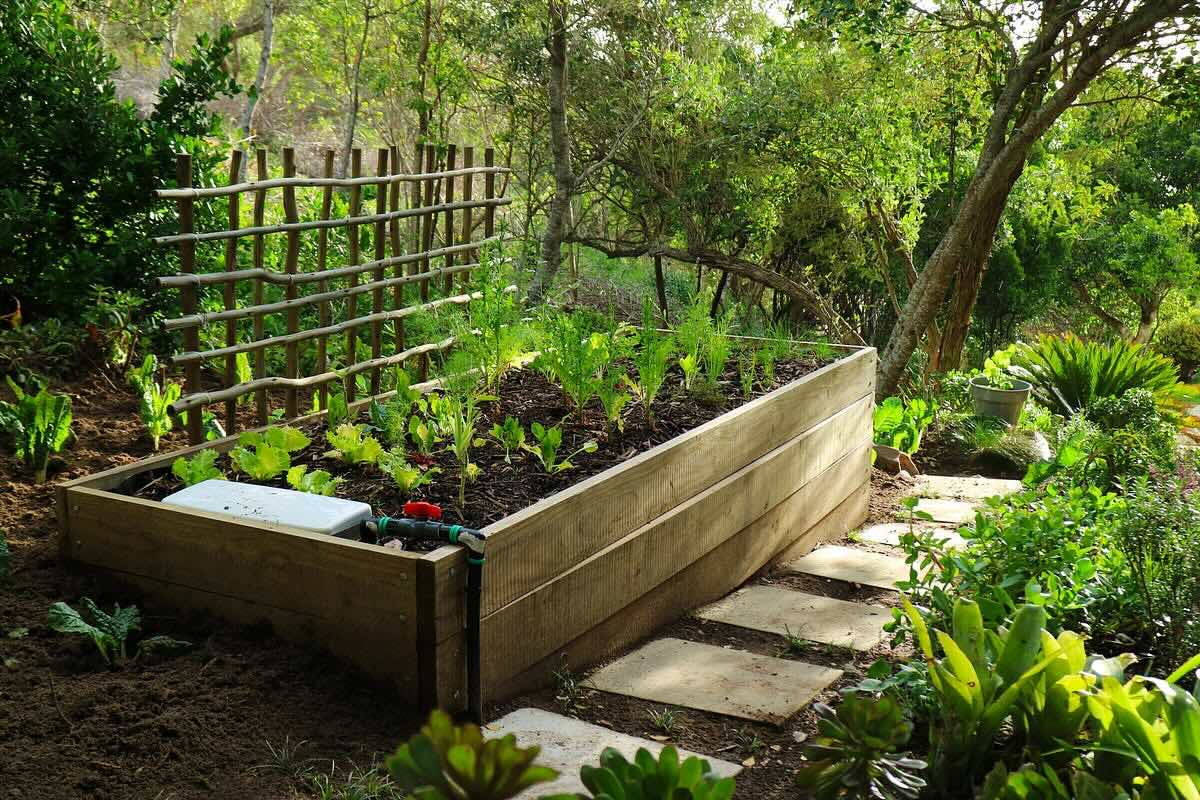

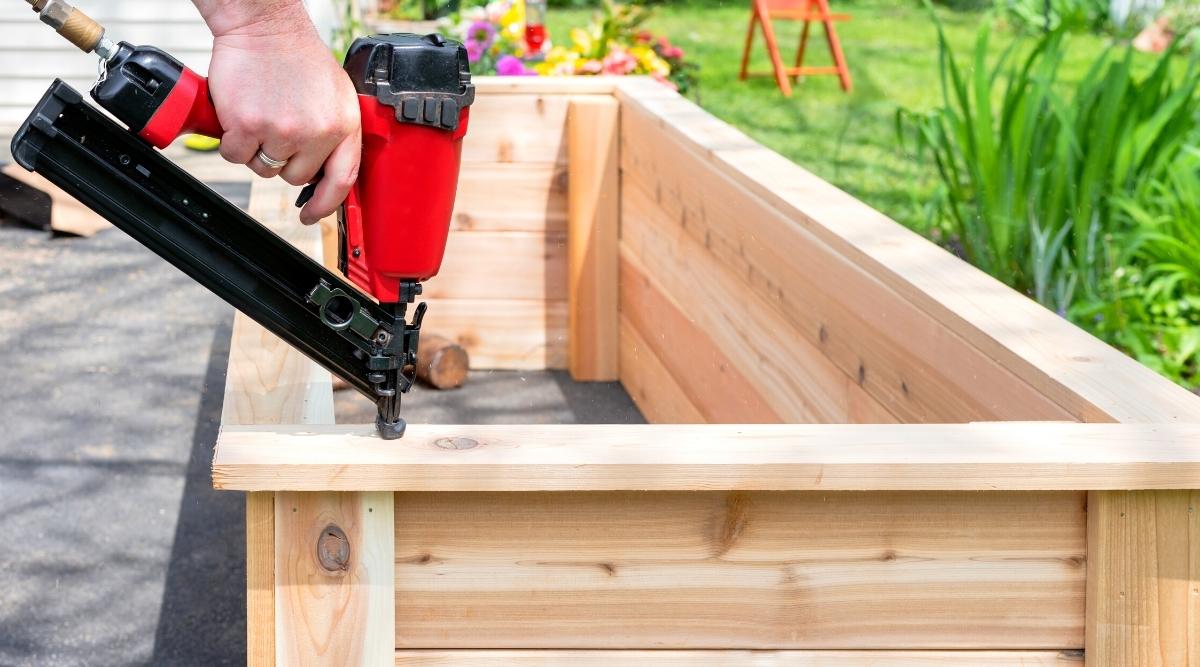
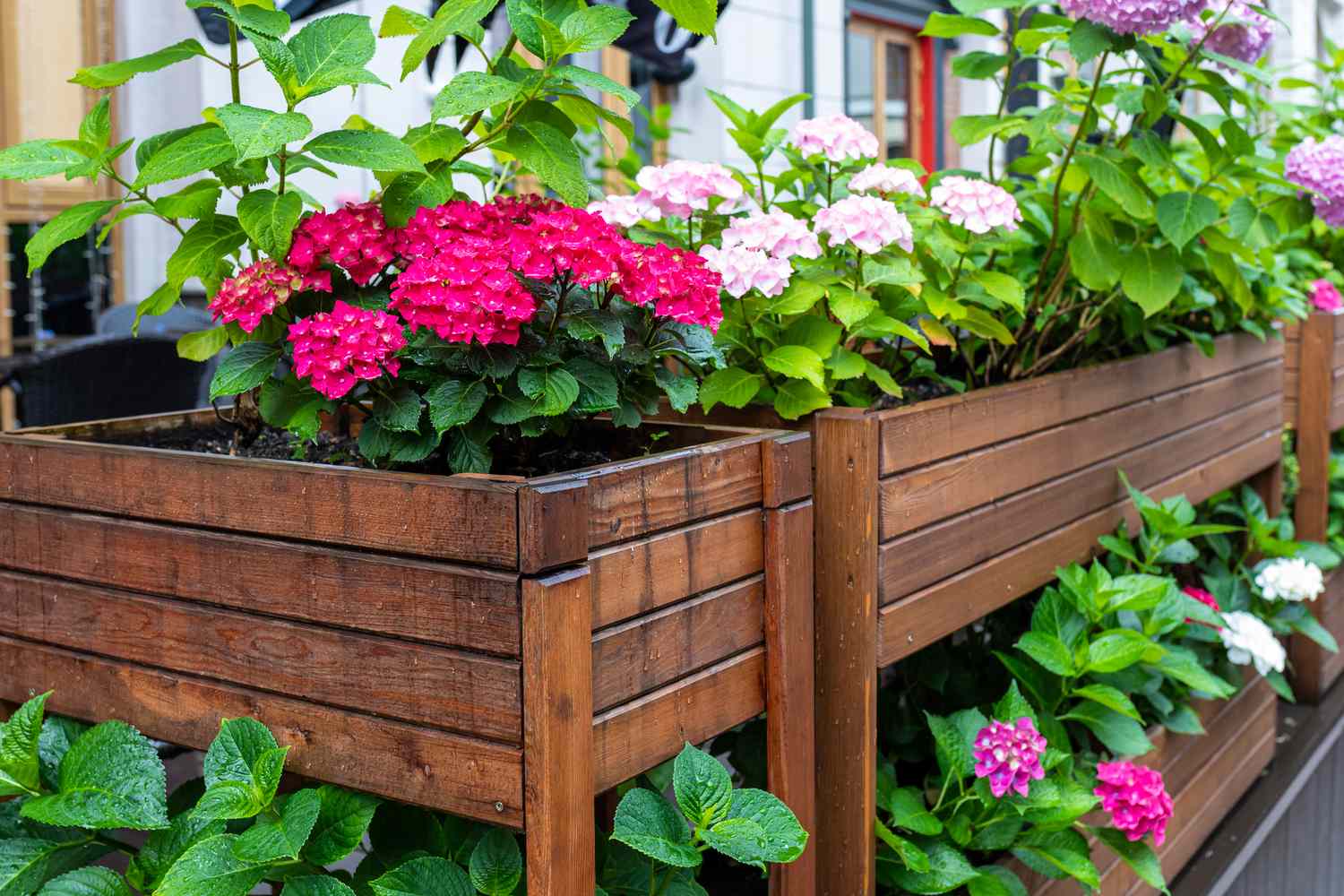
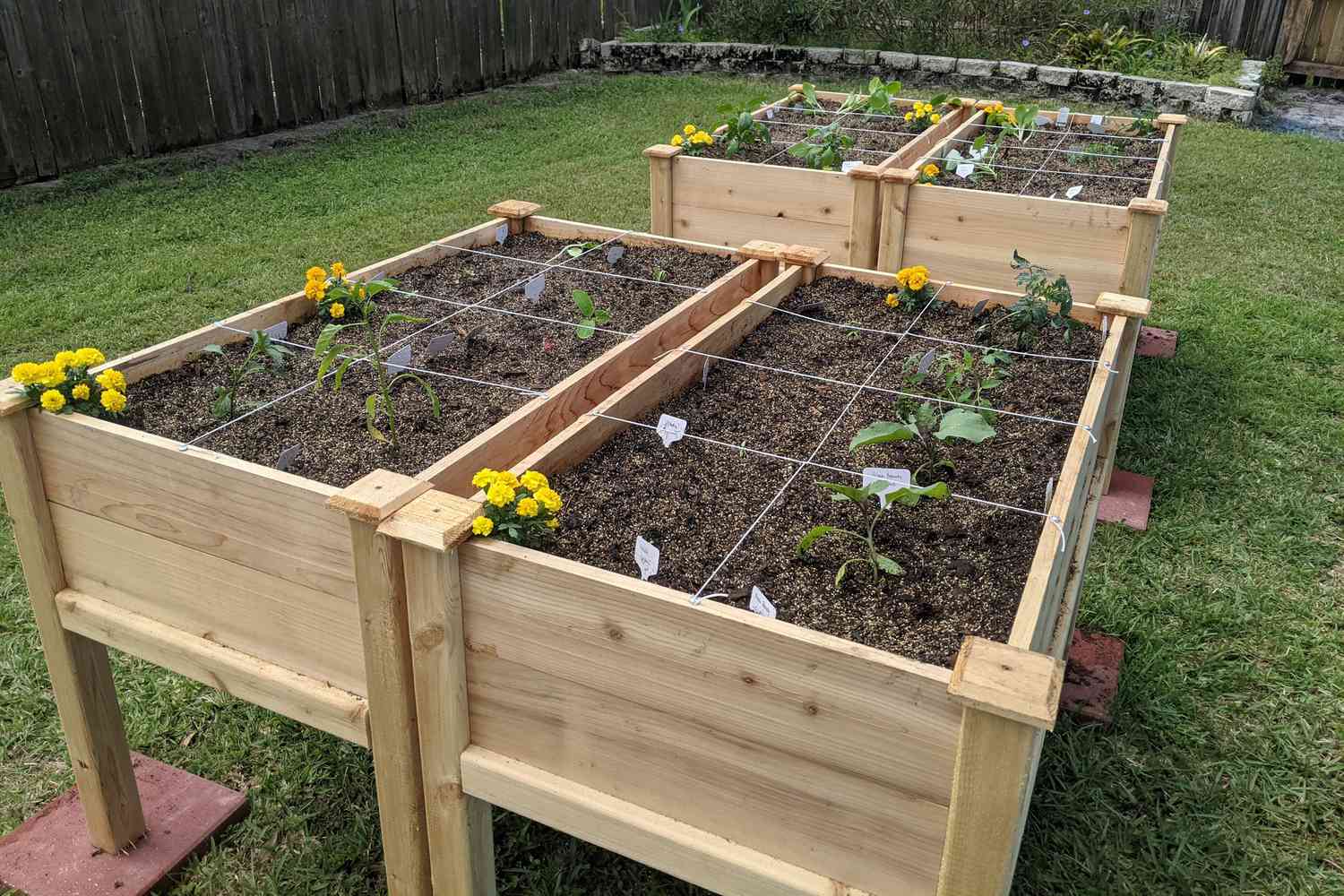
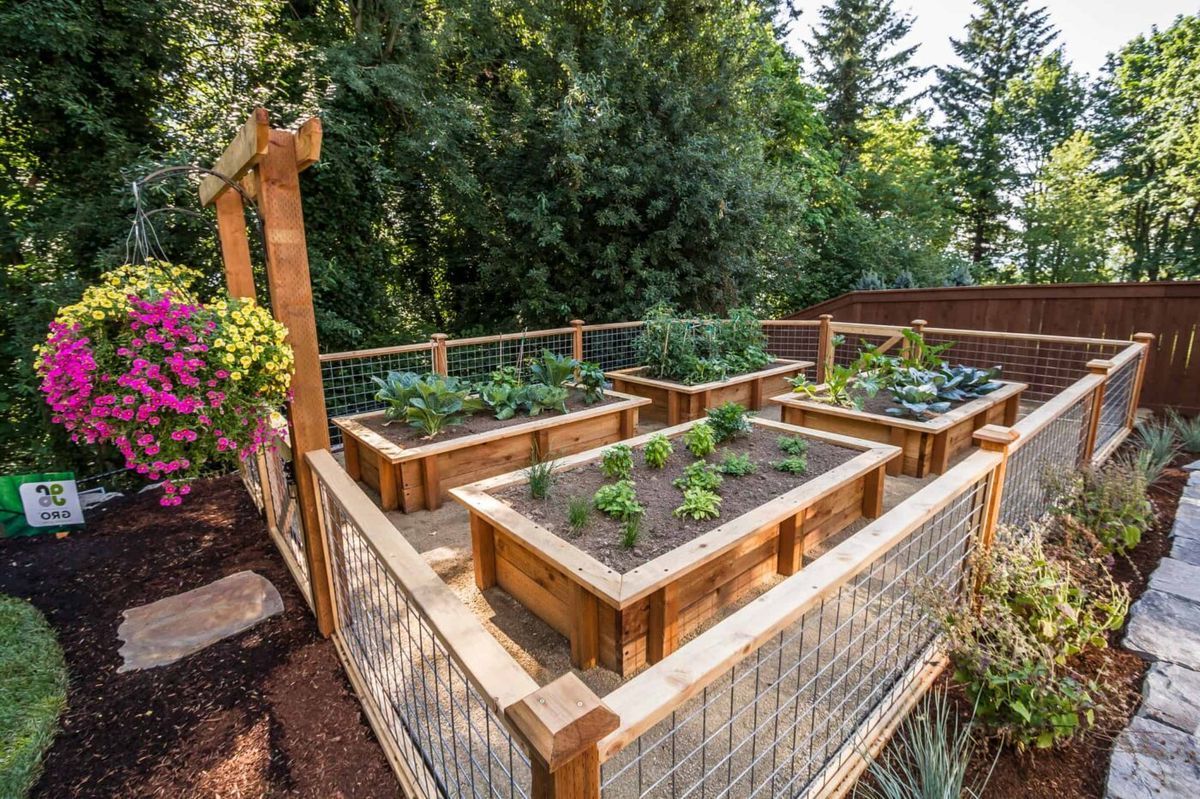
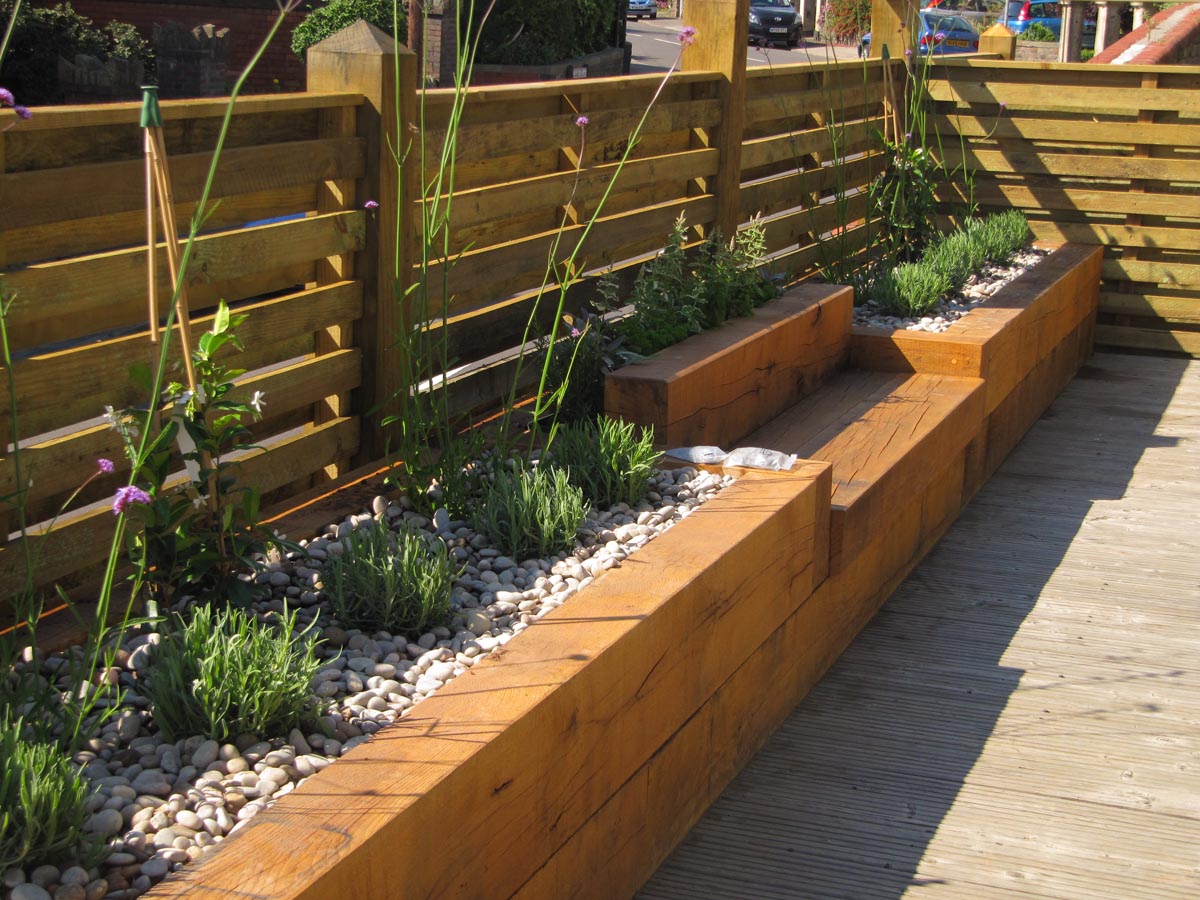
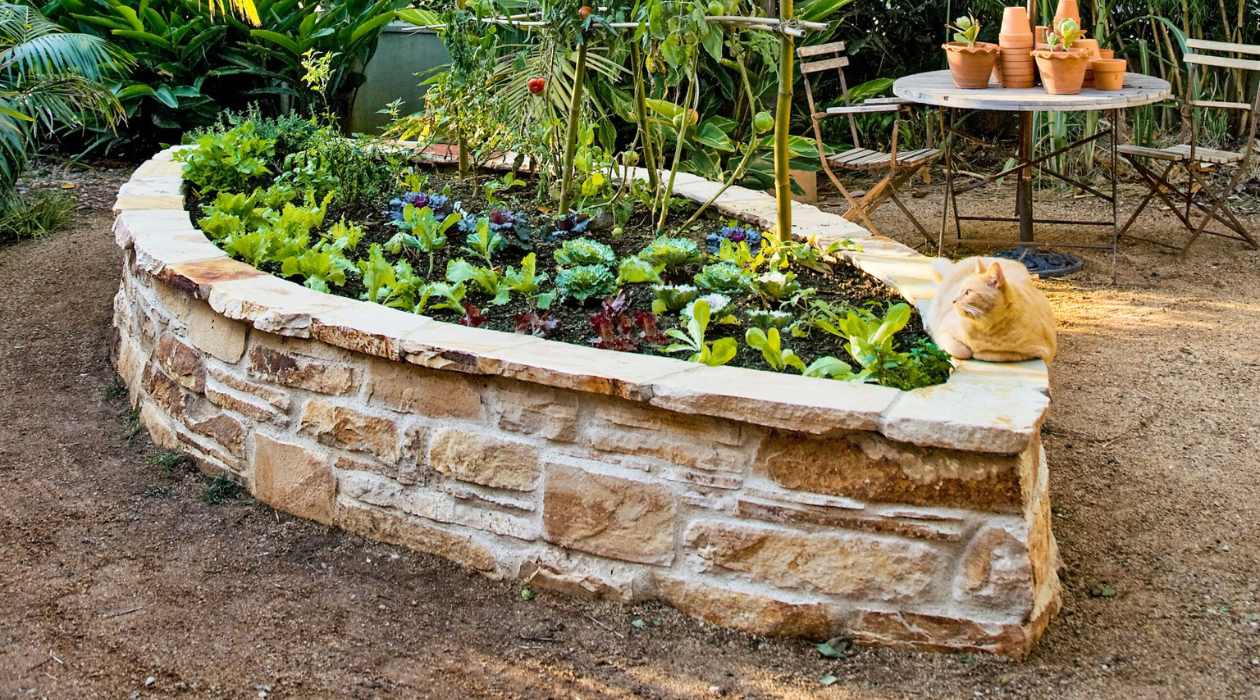

0 thoughts on “What To Use For Drainage In A Raised Bed Garden”